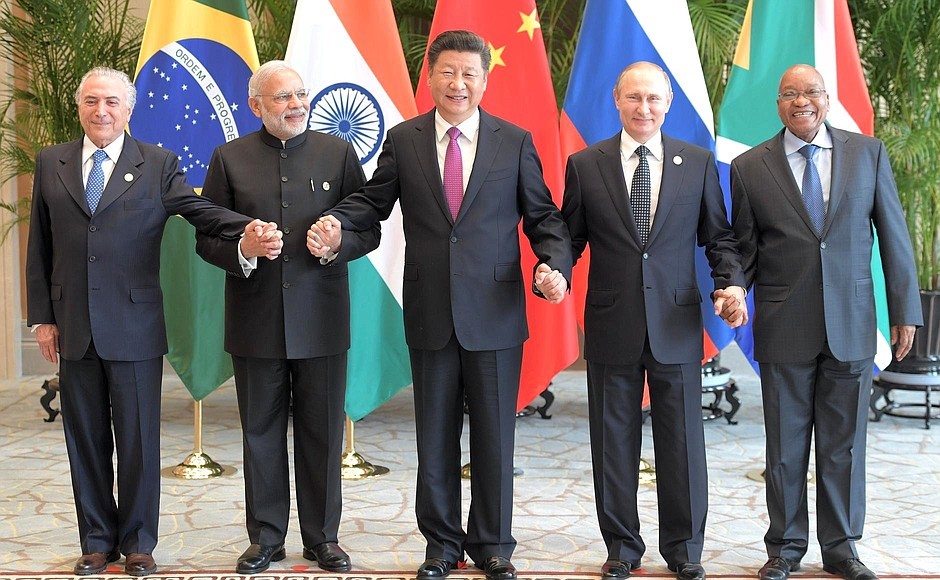For years, governments in India and much of the developing world have followed the advice of a paper arguing that labor regulations actually hurt workers. The problem? The research was wrong.
“Laws Created to Help Workers Often Hurt Them”
It is often argued that strong labor protections for ordinary workers represent “luxuries developing countries cannot afford.” The idea is that laws governing wages and working conditions or facilitating collective bargaining must raise labor costs and prices, hence bring damage to business profits and firm investment, and in so doing destroy the exact jobs they were intended to protect. “… laws created to help workers often hurt them,” is how the World Bank (2008, p. 8) sums it up.
This particular “perversity trope” has been invoked numerous times in the Indian debate on the impacts of labor market regulation on registered manufacturing performance that has raged for decades (Bhattacharjea 2006; Srivastava 2016; Storm and Capaldo 2018; Karak and Basu 2019). To justify policies of labor market deregulation, successive Indian governments, of varying political colors, have claimed that India’s “archaic” and “restrictive” labor regulation in registered manufacturing hurt industrial performance—the recent anti-labor reforms by the Bharatiya Janata Party (BJP)-led government of Narendra Modi are only the latest manifestation of what has been standard policy since at least the mid-1980s.
Arguably, no study has been more useful in propagating the claim that pro-worker labor regulation ends up hurting workers in India than the 2004 Quarterly Journal of Economics article by Timothy Besley and Robin Burgess, who conclude based on econometric evidence that “pro-worker labor regulation resulted in lower output, employment, investment, and productivity in the formal manufacturing sector. Output in the informal sector increased” (Besley and Burgess 2004, p. 92-93). Their article has been grist to the neo-liberal mill and was used by the Government of India in its Economic Survey 2006 to justify labor market deregulation. It was highlighted approvingly in the World Development Report 2005, and the de jure measure of labor regulation developed by Besley and Burgess has been widely used in subsequent research.
So what Did Besley and Burgess Find?
Besley and Burgess (2004) exploit cross-state variations in Indian registered manufacturing performance and in labor regulation to evaluate the impacts of regulation on output, employment, investment and productivity. To measure the degree of labor market regulation, the authors created a new indicator of regulation (which I call the BB-index), based on the state-wise variation in the direction of amendments that different Indian states made to the Industries Disputes Act (IDA) of 1947.
They classify the amendments as “pro-worker,” “neutral,” or “pro-employer,” assigning scores of +1, 0, and -1, respectively. The state-wise scores are cumulated over time to obtain a “regulatory measure” for each state in each year. Using two different panel data sets—one based on aggregate manufacturing data for 16 Indian states (1958-1992) and one using three-digit industries-level data for the same states (1980-1997)—Besley and Burgess estimate the impact of labor regulation on manufacturing performance. What they find is that pro-worker regulation is consistently associated with lower output, lower employment, lower productivity, and lower investment in registered manufacturing; but pro-worker labor laws did not significantly affect earnings per employee.
Besley and Burgess argue that their findings are economically very significant. For instance, they claim that manufacturing output in Andhra Pradesh would have been only 72% of its actual 1990 level, generating 199,000 fewer jobs, without the pro-employer reforms undertaken by this state. Their second counterfactual concerns West Bengal where their estimates indicate that, without pro-worker reforms, manufacturing output would have been 24% higher than its 1990 level and employment would have been up by 180,000 extra jobs.
Persuaded by their findings, Besley and Burgess (2004, p. 124) conclude that it is “apparent that much of reasoning behind labor regulation was wrong-headed and led to outcomes that were antithetical to their original objectives” and that “attempts to redress the balance of power between capital and labor can end up hurting the poor.” The two LSE economists conclude by writing that the “battle cry of labor market regulation is often that pro-worker labor market policies redress the unfavorable balance of power between capital and labor, leading to a progressive effect on income distribution. We find no evidence of this here—indeed the distributional effects appear to have worked against the poor.” This is the rhetoric of reaction in full swing.
Non-Trivial Conceptual Problems
Besley and Burgess (2004) have been substantively critiqued (Bhattacharya 2006; D’Souza 2010; Roychoudhury 2014; Karak and Basu 2019). A first problem concerns the BB-index. Besley and Burgess (2004, p. 98) acknowledge that constructing the index required a number of judgment calls, but they confidently report that they “found surprisingly few cases of uncertainty”. Experts beg to disagree, however, and highlight considerable problems, including a demonstrably inappropriate classification of individual amendments (based on erroneous interpretation of the legal changes and misdating of the amendment) and the coding of incommensurable changes as either +1 or ‒1 (Bhattacharjea 2006). What is more, the BB index exclusively focuses on the IDA and ignores other existing labor laws, the impacts of which often overwhelm those of the IDA.
A second concern is that most pro-worker amendments occurred in the 1980s—this is reflected by the fact that 30 of the 43 changes in the BB-index occur in this decade. But, paradoxically, the 1980s were a period of broadly weakening labor power and increased evasion of labor laws. The diminishing power of unionized workers is illustrated by the steady post-1980 decline in the wage share. In 1980, the share of wages in value added in India’s registered manufacturing sector was 44%; the wage share subsequently declined to 32% in 1992-93 and to 26% in 1998-99—a staggering decline of 18 percentage points in less than twenty years (Jayadev and Narayan 2018). Wages increased much more slowly than labor productivity, as unionization rates declined, social security for “protected” workers was scaled down and earnings inequality rose sharply (Srivastava 2016). Paradoxically, the labor share in manufacturing value added declined most in states classified as “pro-worker”—by 19 percentage points during 1980-81/1998-99. Speaking of the increased bargaining power of unionized workers in the face of such unprecedented declines in the labor share in registered manufacturing appears far-fetched.
All this suggests another limitation of the de jure BB-index: non-compliance with the labor rules is pervasive and de facto enforcement is weak or absent (Chatterjee and Kanbur 2015; Srivastava 2016). Moreover, employers in India’s registered manufacturing massively circumvented the (old and new) labor laws by employing more and more (temporary) contract workers, who are not covered by these laws (D’Souza 2010; Jayadev and Narayan 2018). The share of contract workers in total registered manufacturing employment rose from a negligible level in the early 1970s to about 12% in the mid-1980s and almost 20% by 1998-99 (Srivastava 2016). All this suggests a secular weakening of the bargaining power of workers—which happened despite the IDA amendments.
Serious Econometric Concerns
The regressions by Besley and Burgess have rightly been criticized for omitted-variable bias—and for the fact that many of their “control” variables are not statistically significant and do not control for anything. Besley and Burgess do report that the inclusion of state-specific time trends washes out the negative impact of labor regulation: the coefficient on their index turns statistically insignificant. But they interpret this as evidence that their measure of labor regulation is a driver of these state-specific time trends. This smacks of confirmation bias; a more appropriate conclusion is that any impact of labor laws on manufacturing is overwhelmed by other drivers.
I tried to replicate Besley and Burgess’ findings for registered manufacturing output reported in their Table III, using the panel data made available online by the Economic Organisation and the Public Policy Programme (EOPP) of the LSE (Besley and Burgess 2019). Curiously, the online dataset did not allow replication, a first reason being that the number of observations was much lower than the number of observations reported by Besley and Burgess. Hence, I created an alternative panel dataset using data (for 1960-1992) from Besley and Burgess (2019) in combination with data by Karak and Basu (2019).
With my dataset I find that the impact of labor regulation on manufacturing output is negative in the base-line regression, turns positive when I include state-specific time-trends (in contrast to what Besley and Burgess found), and is insignificant when observations for West Bengal are excluded from the panel or when the time-period is restricted to 1981-1992. It appears that only particular model specifications can yield results similar to those of Besley and Burgess.
Going Beyond the Existing Criticisms: The Findings Contradict the Theory …
In an underdeveloped section titled “Theoretical Considerations,” Besley and Burgess mention ways through which pro-worker regulation ends up hurting manufacturing performance. First, pro-worker regulation is said to raise the labor cost to firms which will then substitute capital for labor. Second, the higher unit labor cost is argued to make manufacturing goods more expensive and this next reduces demand and output. And third, there is the good-old “expropriation effect”: pro-worker labor regulation enables workers to extract a greater share of the return on existing (sunk) investments, which discourages future investment. Investment will be lower and hence capital stocks will be lower—reducing growth of output and employment. Besley and Burgess do not show any awareness that the three “explanations” are mutually inconsistent: capital-labor substitution would mean capital intensity goes up, whereas capital intensity must go down in the third, “hold-up,” argument. One cannot take a swim and not get wet.
Using the estimation results of Besley and Burgess, it can be shown that none of these three explanations hold any water. According to the estimated impacts of pro-worker regulation, Indian firms did the exact opposite of what Besley and Burgess argue: firms reduced the capital intensity of production and raised labor intensity! Firms substituted labor for capital, rather than the other way around. On the second explanation: while it is true that pro-worker regulation is found to have raised unit labor cost, the impact of this on manufacturing prices (and hence on demand and output) was almost negligible, because labor costs constitute a mere 10% of total manufacturing production costs. This implies that a 10% increase in unit labor costs would raise manufacturing prices by only 1%. And it is all too clear that the “expropriation story” is a myth, as pro-worker regulation was not found to increase earnings and supposedly “protected” workers were completely powerless in the face of strong increases in firms’ profit shares. How can workers extract a greater share of the profits when the de facto enforcement of the labor laws is weak or even zero—or where firms circumvent the law by hiring contract workers? And why on earth would firms, supposedly fearing the “expropriating” power of workers protected by law, increase the labor intensity of production?
I finally show that the findings of Besley and Burgess (2004) are not economically meaningful, but utterly unrealistic and taxing any person’s capacity for belief. To illustrate, using the estimates and the mean of the cumulative BB-index of Besley and Burgess, it follows that if West Bengal had not adopted any pro-worker reform, its registered manufacturing output would have been a 1,000 percent higher than its actual 1990 level! In other words, Bengal could have been the next Asian Tiger but for those pro-worker amendments of IDA, which not merely blunted manufacturing investment, but actually asphyxiated the industry. This makes no sense.
This is the Story of the Useful Economist
The paper of Besley and Burgess (2004) thus suffers from fatal errors of omission and commission. The paper, written by two “useful economists,” exhibits a gratuitous empiricism in which priors trump evidence. On all counts, it fails the test of being useful to the purpose of “evidence-based” public policy advice. But what I want to emphasize here is that this high-profile paper is by no means the only one to fail the replication test and/or break down after closer scrutiny. The problem is endemic in economics, which so often claims to do “value-free” social-science research and provide “evidence-based” public-policy advice.
Allow me to give a few examples. The QJE paper of Botero et al. (2004) which reported negative impacts of labor laws on economic performance, was falsified by Kanbur and Ronconi (2016) who demonstrate that the impacts turn statistically insignificant after quite sensibly controlling for “enforcement.” Likewise, careful replication analyses by Howell, Baker, Glyn and Schmitt (2007), Baccaro and Rei (2007), and Vergeer and Kleinknecht (2012) jointly falsify a dozen high-profile econometric studies, published in peer-reviewed outlets, which all reported negative impacts of pro-worker regulation on unemployment in the OECD economies, including articles published by The Economic Journal. The published results were found to be robustly non-robust, with signs (+/‒) of impacts changing and their statistical significance invalidated in response to minor amendments in estimation procedures.
The fundamental flimsiness of approach and findings of this body of work stands in stark relief to its more than sweeping, and socially costly, public policy recommendations to abolish pro-worker labor regulation. The fact that all these papers came through the peer review process does suggest that the peers suffer from confirmation bias, defining “scientific excellence” as whatever is closest to their own scholarly beliefs and methods (D’Ippoliti 2018). Worse, deviating from good scientific practice, the top journals generally do not generally deem it necessary to publish failed replications as a corrigendum to the articles they did publish. Priors continue to overwhelm evidence and sound academic practice. We have to ask, as Thomas Ferguson and Robert Johnson (2018) write, “if something [is] not radically wrong with the structure of the discipline itself that conduced to the maintenance of a narrow belief system by imposing orthodoxies and throwing up barriers to better arguments and dissenting evidence.”
Let me close by restating what I would like the reader to take away from this paper which is that economics has to exercise considerable caution and humility in constructing and interpreting the empirical evidence and using it to back up public policy advice. As the example of Besley and Burgess (2004) illustrates, the social and economic damage caused by wrong-headed policy advice to millions of manufacturing workers can be substantial. I know of no credible evidence that suggests that pro-worker labor regulation systematically ends up hurting workers and that could possibly justify the waves of labor market deregulation around the globe (Storm and Capaldo 2018). This brings me full circle to Beatrice and Sidney Webb, the founders of the London School of Economics and Political Science, where Besley and Burgess work, who held the exact opposite view, arguing that “What is most urgently needed …. is an extension of the strong arm of the law on behalf of the oppressed workers in the sweated trades” (Webb and Webb 1902, p. xvii). The Webbs argued in favor of minimum wages, maximum working hours, and considerably strengthening the countervailing power of workers to end employers’ parasitism, and advocated bringing “democracy” to industry through unions and collective bargaining. So much for progress in economics.
References
Baccaro, L. and D. Rei. 2007. ‘Institutional determinants of unemployment in OECD countries: does the deregulatory view hold water?’ International Organization 61 (3): 527-569.
Besley, T. and R. Burgess. 2004. ‘Can labor regulation hinder economic performance? Evidence from India.’ Quarterly Journal of Economics 119 (1): 91-134.
Besley, T. and R. Burgess. 2019. Economic Organisation and Public Policy Programme (EOPP) Indian States Data. http://www.lse.ac.uk/economics/people/personal/eopp-indian-states-data
Bhattacharjea, A. 2006. ‘Labor market regulation and industrial performance in India. A critical review of the empirical evidence.’ The Indian Journal of Labor Economics 49 (2): 211-232.
Botero, J., S. Djankov, R. La Porta, F. Lopez-de-Silanes and A. Shleifer. 2004. ‘The regulation of labor.’ Quarterly Journal of Economics 119: 1339-1382.
Chatterjee, U. and R. Kanbur. 2015. ‘Non‐compliance with India’s Factories Act: Magnitude and patterns.’ International Labor Review 154 (3): 393-412.
D’Ippoliti, C. 2018. ‘‘Many-citedness’: citations measure more than just scientific impact.’ INET Working Paper No. 57. New York: Institute for New Economic Thinking. https://www.ineteconomics.org/uploads/papers/WP_57-DIppoliti-revised.pdf
D’Souza, E. 2010. ‘The employment effects of labor legislation in India: a critical essay.’ Industrial Relations Journal 41 (2): 122–35.
Ferguson, T. and R. Johnson. 2018. Research Evaluation in Economic Theory and Policy: Identifying and Overcoming Institutional Dysfunctions. Policy Brief to the G20 Argentina. Available at: https://www.g20-insights.org/policy_briefs/research-evaluation-in-economic-theory-and-policy-identifying-and-overcoming-institutional-dysfunctions/
Howell, D., D. Baker, A. Glyn and J. Schmitt. 2007. ‘Are protective labor market Institutions at the root of unemployment? A critical review of the evidence.’ Capitalism and Society 2 (1): 1-73.
IMF. 2016. ‘Time for a supply side boost? Macroeconomic effects of labor and product market reforms in advanced economies.’ World Economic Outlook 2016. Washington, DC: IMF. pp. 101–142.
Jayadev, A. and A. Narayan. 2018. ‘The evolution of India’s industrial labor share and its correlates.’ CSE Working Paper 2018-4. Azim Premji University: Centre for Sustainable Employment.
Kanbur, R. and L. Ronconi. 2016. ‘Enforcement matters: the effective regulation of labor.’ CEPR Discussion Paper No. 11098. Available at: https://cepr.org/active/publications/ discussion_papers/dp.php?dpno=11098
Karak, A. and D. Basu. 2019. ‘Profitability or industrial relations: what explains manufacturing performance across Indian states?’ Development and Change, forthcoming.
Roychowdhury. 2014. ‘The labor market flexibility debate in India: Re‐examining the case for signing voluntary contracts.’ International Labor Review 153 (3): 473-487.
Storm, S. and J. Capaldo. 2018. ‘Labor institutions and development under globalization.’ INET Working Paper No. 76. New York: Institute for New Economic Thinking. https://www.ineteconomics.org/uploads/papers/WP_76-Storm-and-Capaldo-Final.pdf
Vergeer, R. and A. Kleinknecht. 2012. ‘Do flexible labor markets indeed reduce unemployment? A robustness check. Review of Social Economy 70 (4): 1-17.
Webb, S. and B. Webb. 1902. Problems of Modern Industry. New York, NY: New World
World Bank. 2005. World Development Report 2005: A Better Investment Climate for Everyone. Washington, DC: World Bank.
World Bank. 2008. Doing Business: An Independent Evaluation Report. Washington, DC: World Bank.






